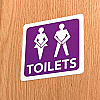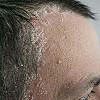Sciatica
Sciatica is pain along the sciatic nerves, the longest nerves in the body. The pain begins in the lower spine, passes through the buttock, down the back and side of the leg, and into the foot and toes. A common cause of sciatica is a herniated disk. It can also be brought on by spinal stenosis, infection, a broken pelvis or thighbone, or a tumor. Sciatica tends to affect people in their 40s and 50s, and it is more common in those who are overweight.
Symptoms of sciatica
The main feature of sciatica is numbness, tingling, or pain in the lower back, buttock, and leg. It can be relatively mild or erupt into violent throbbing pain that grips the back and leg, making any movement excruciating.

The symptoms are made worse by moving, coughing, or sneezing. Activities that tug on the sciatic nerve, such as bending forward from the waist or flexing the hips while the knees are straight, can aggravate the symptoms.
The pain may be constant, so you can't find any comfortable position. Or it may come and go as a sharp, shooting, electric shock-like sensation.
When a severely herniated disk is the cause of the problem, and other nerves are involved, bladder or bowel function may be affected, and one or both legs may become weak.
Sciatica is sometimes confused with restless leg syndrome. In the latter, leg pain crops up only when relaxing, especially in the evening before bedtime or while falling asleep.
Treating sciatica
In half of people with sciatica, the pain goes away without treatment within 4 weeks; fewer than 5% to 10% of people with sciatica require back surgery.
No matter how painful your sciatica is, your doctor may first recommend up to 3 days of bed rest and nonsteroidal anti-inflammatory drugs such as ibuprofen or naproxen to relieve pain and decrease inflammation. Longer periods of bed rest aren't helpful; instead, it's better to get up and begin moving again.
Things you can do at home to ease sciatic pain include:
- stretching. Exercises that stretch your lower back may offer relief by easing pressure on the nerve.
- taking medication. Over-the-counter pain relievers such as ibuprofen and naproxen may help quell the pain.
- cold. A cold pack placed over painful spots for a few minutes several times a day may feel good. After a few days, switch to gentle heat.
- heat. Gentle heat from a hot pack or a heating pad can ease sciatica pain.
- losing weight. If you are overweight, losing weight can help relieve sciatica.
- improving posture. If your posture is out of line, working with a physical therapist to correct it can ease sciatica.
If sciatica pain lasts for more than six weeks, or is so severe that it interferes with your daily life, an MRI scan, CT scan, or a myelogram may be needed to see if a herniated disk is causing the sciatica. A myelogram is an x-ray or CT scan that uses a special dye injected into the spinal canal to highlight the spinal cord and other nearby structures.
When sciatica is severe, an infection of a corticosteroid medication into the area around the affected nerve can reduce pain by quelling inflammation around the irritated nerve. Pain and other symptoms tend to return after a few months.
Surgery to remove a bone spur or the segment of the herniated disk that is compressing the sciatic nerve may be needed when pressure on the nerve is also causing pain that continues to get worse, weakness, or bowel or bladder incontinence.
Disclaimer:
As a service to our readers, Harvard Health Publishing provides access to our library of archived content. Please note the date of last review or update on all articles.
No content on this site, regardless of date, should ever be used as a substitute for direct medical advice from your doctor or other qualified clinician.















